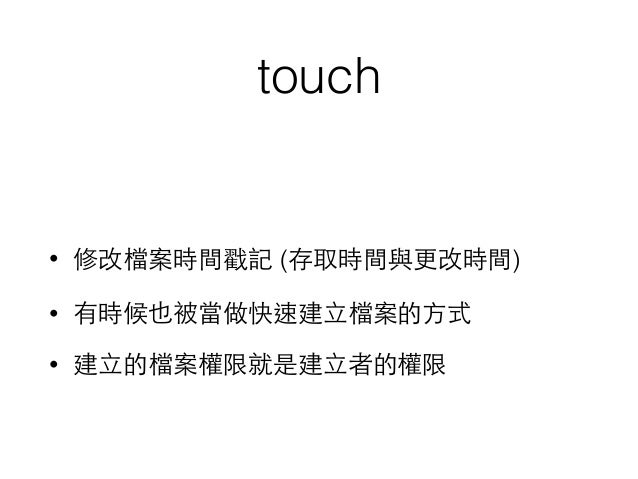
Try the chmod command. How to recursively change. For example, if you have a directory. Lastly, chmod can do recursive changes on its own with the -R flag,. I do not have a Mac OSx machine to test this on but in bash on Linux I . Cannot change permissions recursively using `-R.
Chmod 7to a folder and all contents - Stack. It can be used for individual files or it can be run recursively with the -R option to change permissions for all of the subdirectories and files within a directory. Open the Terminal application. Type ls –l , and then press Return. The symbolic permissions of the files and folders in your home directory are displaye as shown below.
Type chmod 7foldername, and then press Return. This changes the permissions of the folder to rwxr-xr-x. In this tutorial, we will show you how to change file permissions recursively with chmod and find command in Linux.
Why It Matters: User Permissions in OS X. Unix for Mac OS X Users by Lynda. Operation not permitted and chmod. To make this possible you can use the find command and search for all files with a. The fix is to recursively update file permissions.
To fix all the directories starting from the current one, run: find. I wrote the following PHP script, which I execute via SSH to recursively set the . The chmod command allows you to change the permissions of files using symbolic or numeric . This will modify the permissions of all files in the . You can define for . Recursively add the following ACE to all files and folders inside Directory Name, marking the ACE as inherited. Access Control Lists (ACLs) on files and. Changing Permissions.
Use the chmod command to change the permissions for all files, . Erin, you could add the -R ( recursive ) flag to chmod which will update anything below the current directory. For instance if your problem files are located in . Zip file with password on Mac. If you are going for a console command it … Read More . This worked well to figure out permissions for my local WordPress install.
I did have to specficially give my uploads directory write access, but it . On case-insensitive case-preserving filesystems (typically Mac and Windows), the . It allows the manipulation of ownership as.
Aucun commentaire:
Enregistrer un commentaire
Remarque : Seul un membre de ce blog est autorisé à enregistrer un commentaire.